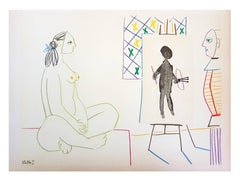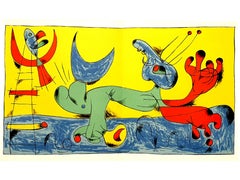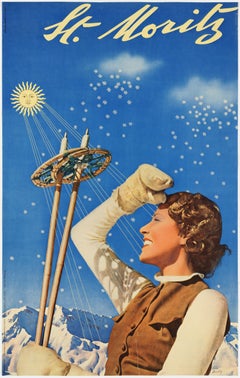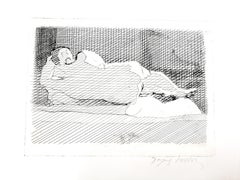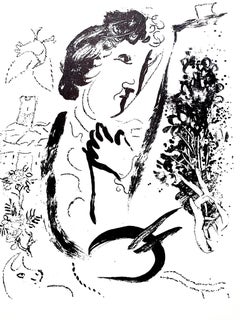Switzerland - Prints and Multiples
1950s Modern Switzerland - Prints and Multiples
Lithograph
1950s Abstract Switzerland - Prints and Multiples
Lithograph
1930s Modern Switzerland - Prints and Multiples
Paper
1950s Modern Switzerland - Prints and Multiples
Etching
2010s Young British Artists (YBA) Switzerland - Prints and Multiples
Glitter, Giclée
1960s Surrealist Switzerland - Prints and Multiples
Lithograph
1960s Surrealist Switzerland - Prints and Multiples
Etching
1960s Modern Switzerland - Prints and Multiples
Lithograph
21st Century and Contemporary Contemporary Switzerland - Prints and Multiples
Photographic Film, Photographic Paper, Carbon Pigment, Polaroid
1960s Modern Switzerland - Prints and Multiples
Lithograph
1960s Surrealist Switzerland - Prints and Multiples
Etching
1970s Modern Switzerland - Prints and Multiples
Lithograph
1920s Switzerland - Prints and Multiples
Lithograph
21st Century and Contemporary Contemporary Switzerland - Prints and Multiples
Carbon Pigment, Polaroid
1960s Surrealist Switzerland - Prints and Multiples
Lithograph
1940s Modern Switzerland - Prints and Multiples
Lithograph
1960s Surrealist Switzerland - Prints and Multiples
Etching
1960s Modern Switzerland - Prints and Multiples
Lithograph
1950s Cubist Switzerland - Prints and Multiples
Engraving, Woodcut
21st Century and Contemporary Contemporary Switzerland - Prints and Multiples
Black and White
1960s Surrealist Switzerland - Prints and Multiples
Lithograph
Mid-20th Century Modern Switzerland - Prints and Multiples
Paper
1960s Abstract Expressionist Switzerland - Prints and Multiples
Lithograph
1950s Modern Switzerland - Prints and Multiples
Lithograph
1960s Surrealist Switzerland - Prints and Multiples
Etching
1940s Modern Switzerland - Prints and Multiples
Lithograph
1980s Modern Switzerland - Prints and Multiples
Lithograph
1960s Surrealist Switzerland - Prints and Multiples
Lithograph
1950s Modern Switzerland - Prints and Multiples
Lithograph
1950s Abstract Expressionist Switzerland - Prints and Multiples
Stencil
1950s Modern Switzerland - Prints and Multiples
Lithograph
1960s Surrealist Switzerland - Prints and Multiples
Lithograph
1960s Modern Switzerland - Prints and Multiples
Lithograph
1960s Modern Switzerland - Prints and Multiples
Lithograph
1920s Modern Switzerland - Prints and Multiples
Etching
1960s Modern Switzerland - Prints and Multiples
Lithograph
1990s Abstract Expressionist Switzerland - Prints and Multiples
Etching
1950s Impressionist Switzerland - Prints and Multiples
Lithograph
1960s Surrealist Switzerland - Prints and Multiples
Engraving
1970s Surrealist Switzerland - Prints and Multiples
Etching
1940s Fauvist Switzerland - Prints and Multiples
Lithograph
1960s Modern Switzerland - Prints and Multiples
Lithograph
1930s Modern Switzerland - Prints and Multiples
Lithograph
21st Century and Contemporary Contemporary Switzerland - Prints and Multiples
Photographic Film, Photographic Paper, Color, Carbon Pigment, Polaroid
1990s Abstract Expressionist Switzerland - Prints and Multiples
Etching
1940s Fauvist Switzerland - Prints and Multiples
Lithograph
20th Century Switzerland - Prints and Multiples
Lithograph
1970s Abstract Geometric Switzerland - Prints and Multiples
Lithograph
1960s Surrealist Switzerland - Prints and Multiples
Etching
2010s Abstract Geometric Switzerland - Prints and Multiples
Lithograph
19th Century Realist Switzerland - Prints and Multiples
Engraving
2010s Photorealist Switzerland - Prints and Multiples
Lithograph
1970s Realist Switzerland - Prints and Multiples
Ink
1960s Modern Switzerland - Prints and Multiples
Lithograph
1960s Abstract Expressionist Switzerland - Prints and Multiples
Lithograph
1980s Surrealist Switzerland - Prints and Multiples
Lithograph
1960s Surrealist Switzerland - Prints and Multiples
Etching
1960s Modern Switzerland - Prints and Multiples
Lithograph
Mid-20th Century Modern Switzerland - Prints and Multiples
Paper
1940s Modern Switzerland - Prints and Multiples
Etching
Read More
Joan Mitchell’s Rare, Late-Career Diptych Buzzes with Life
Beneath the inky blackness, the painter’s irrepressible energy electrifies this pair of intaglio prints.
The 1stDibs Guide to Types of Abstract Art
Get to know the key movements and artists who have influenced visual culture for more than a century.
Romare Bearden’s Humanity Infuses His Bright, Bold Art
Through collage, painting and printmaking, the artist foregrounded Black life in America in revolutionary new ways.
Andy Warhol and Suzie Frankfurt’s ‘Wild Raspberries’ Cookbook Is an Artful, Fanciful Delight
This set of recipes and original prints might not make you a better chef. But it will make you smile.
Art Brings the Drama in These Intriguing 1stDibs 50 Spaces
The world’s top designers explain how they display art to elicit the natural (and supernatural) energy of home interiors.
Welcome (Back) to the Wild, Wonderful World of Walasse Ting
Americans are rediscovering the globe-trotting painter and poet, who was connected to all sorts of art movements across a long and varied career.
Shapero Modern’s Director Tells Us All about 20th-Century Prints
Tabitha Philpott-Kent knows a lot of art multiples. Here, the London gallery director talks about what makes printmaking so fabulous.
Yoshitomo Nara Puts a Punk Rock Twist on the Traditional Prints of His Ancestors
The forever-rebellious Japanese artist craftily defaces famous Edo Period woodblock prints with “In the Floating World.”
